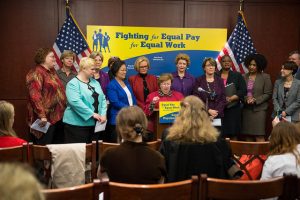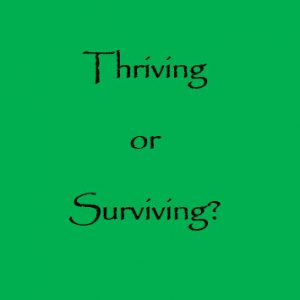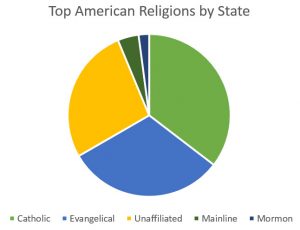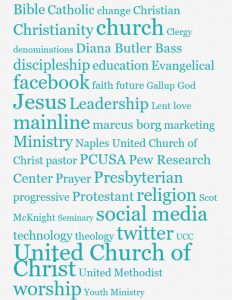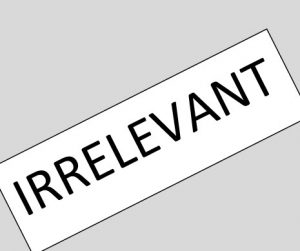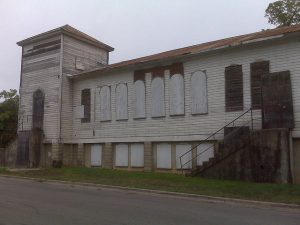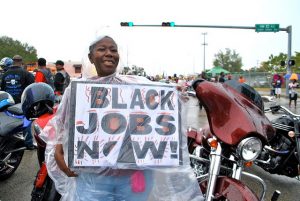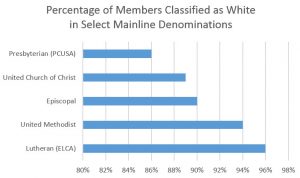Equal pay for equal work has been the law of the land in the USA for my entire life. That legal expectation, however, has not translated into actual dollar per dollar gender equality. In fact, the latest Bureau of Labor Statistics data indicates women earn just $0.83 for every dollar men earn. American Clergy Since the Christian church holds equality of all persons as a core value, one should reasonably expect it would be a model of pay equality. Unfortunately, the pay gap for Read More …
Trends
Small Congregations – Big Challenges (#1607)
While I have spent most of my life affiliated with large congregations, I realize that there are more small congregations than large ones and that small congregations increasingly face big challenges. The FACT The 2015 FACT (Faith Communities Today) research (American Congregations 2015: Thriving and Surviving) was published earlier this month. It is the latest survey in a series that started in 2000, and was repeated in 2005, 2008, 2010, and 2015. Read More …
Top Religions by State (#1606)
There are many ways to look at America's top religions. The Public Religion Research Institute's new American Values Atlas offers a helpful way to consider the religious makeup of the United States on both a national and state level. National Perspective As a whole the top three religions in our country are Catholic - 22% Religiously unaffiliated - 22% White Evangelical Protestants - 18%. Personal Experience I have spent my life in Texas and Florida. The largest Read More …
Last Blog Post (#1599)
This will be my last blog post for awhile . . . History Six years and four months ago, I launched this site. At that time, I never imagined that I would become a prolific blogger who would author 1,600 blog posts (an average of just over 250 a year!). I also had not given any real consideration to what my life might look like if I were not employed by a church. Happening Now After serving Mainline Protestant congregations for fifteen years in a variety of capacities, I am Read More …
The Shrinking Dreams: America & Church (#1594)
In her recent article in The Atlantic, Marianne Cooper considered data from a number of recent surveys before concluding that "people are downsizing their definition of the American dream." More specifically, she notes that "the desire to own a home or to move up economically is often replaced by a desire to be debt free and to have financial stability." What Next? Cooper rightly suggests that this general shift in perspective is likely to have many long term negative consequences as Read More …
The Irrelevant Church (#1582)
A week ago I wrote about The Obsolete Church. In that post I suggested that while the little c church (local congregations or communities of faith) remains vital the big C Church (denominations and other institutional expressions) have become obsolete. That post generated more feedback in a variety of forums than any piece I wrote all summer. Apparently "obsolete" is not as clear of a word as I thought it was. As a result, I will try to build on what I said in that piece by Read More …
The Obsolete Church (#1580)
Rev. Osagyefo Uhuru Sekou is an author, documentary filmmaker, public intellectual, organizer, pastor, and theologian. In a recent interview, his response to Sarah Van Gelder's question about the role he sees for the churches now included these challenging words: We have a romantic view of the church . . . I think a church has a role to play, but this idea of the Church, with a big C, I think is obsolete. So What? I encounter extreme views of the Church (capital C church of Read More …
Marginalization as Blessing (#1578)
I cannot even begin to count the number of experts I have heard or read complain about the losses experienced by liberal/progressive (Mainline, Oldline, Sideline) Christianity over the last several decades. I am thankful those voices are beginning to fade as new voices emerge suggesting what this new role means and how God can and is working in and through it. Amy Butler, senior minister of Riverside Church, recently stated that the continued trend toward Read More …
Prayers for Racial Justice (#1576)
This Sunday, August 9, 2015, is the first anniversary of Mike Brown's death. On this day the congregation I pastor (Fort Myers Congregational United Church of Christ) will join with hundreds and perhaps thousands of other congregations in the United Church of Christ by including prayers for racial justice as a part of services of worship. This shared emphasis is the direct result of a group of faith leaders who have met regularly by conference call under the leadership of Read More …
Mainline: Lacking Racial Diversity (#1573)
Race related topics have been featured in the news more in recent months than any time I can recall. Mainline Protestants generally tend to have healthy perspectives on race. Such philosophical and even theological understandings do not necessarily translate into action (for example: read my summary and reflection of Bradley Wright's recent research showing that Mainline Protestant congregations had the highest rate of discrimination to prospective visitors) nor do they Read More …
